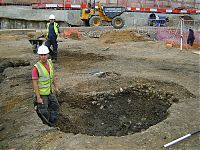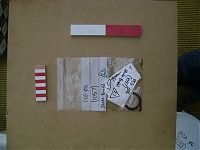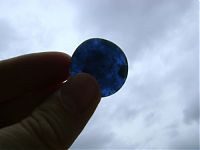Find in mind
- By: Gary Webster |
- Jun 19, 2008
- Share
- del.icio.us

The site is going well and we are currently powering through Zone 2. We have recently discovered a new stone lined pit Context: 1149, the first that we have had on site so far. Ashley has dubbed it “…the most interesting thing on site”, which leads me to believe he has never engaged me in a discussion about Star Trek, or heard my Zombie Rising contingency plans. Unlike the other pits, which we have in abundance, this one has a variety of what appears to be demolition rubble as its lining, instead of bricks or horn cores, so it could be the reuse of construction materials from a building or something similar. We have yet to take the stones out and so don’t really have anything dateable, but we believe it to be medieval, or perhaps post-medieval.
Aside from this interesting feature I have also been spending a lot of time sorting through the finds. It is important to ensure that all of the artefacts, or finds, we discover on site are labelled properly, so we can get the maximum amount of information out of them when it comes to processing them. Finds are one of the easiest ways for us to date features (although it can sometimes be a bit one-sided, and would it kill them to pay for dinner once!?). If we discover a Roman coin in a layer, we then know that it dates from the Roman period or after as it could have been dug up later and re-deposited.
However a large amount of Roman finds, or evidence that it is in situ (like being in a grave, where it was consciously placed) can practically confirm a date for us. After I have ensured that all of the finds are correctly labelled, and in the case of special finds, documented, we can drive them over to the Museum of London, where they will be processed. This will include them being washed and recorded, and in some cases more extensive analysis will take place. This is the material culture of the past, and often this can be all that remains.


